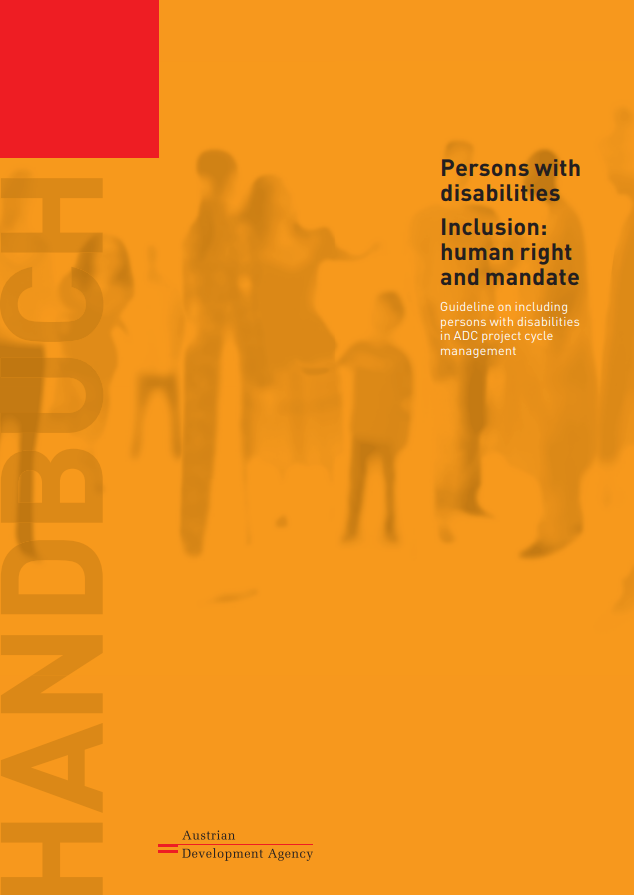Persons with disabilities. Inclusion: human right and mandate
Guideline on including persons with disabilities in ADC project cycle management
Persons with disabilities – disabled by society According to the World Health Organisation (WHO), more than a billion people currently live with some form of disability. These make up about 15 per cent of the world population or about one in seven persons. Eighty per cent of these live in developing countries. They usually belong to the poorest populations, because disabilities are closely bound up with poverty. An estimated one in five of the poorest people worldwide live with disabilities.1 WHO reports that the number of persons with disabilities is on the rise.2 The reasons for this include longer life expectancy, the attendant possible afflictions in older age and the increase in chronic diseases. In the course of life, nobody is safe from the risk of joining the largest minority in the world. The situation of persons with disabilities is particularly harsh in developing countries. Many impairments could be prevented with medical care, simple treatments or sufficient food. For lack of basic services in countries with poor populations, slight impairments often deteriorate unnecessarily into severe disabilities. Limited access to health assistance exacerbates the situation. Persons with disabilities are often unable to secure an adequate standard of living for themselves. About 90 per cent of children with disabilities living in developing countries do not attend school. Lack of access to education hampers employment opportunities, which leads to economic and social exclusion. Women and children often suffer from multiple discrimination and are at particular risk of falling victim to violence and abuse. Although taking account of the needs and conditions of persons with disabilities in programmes and projects would improve aid effectiveness (DC), raise the efficiency of poverty reduction and help prevent discrimination and exclusion, persons with disabilities are still often ignored in DC and other areas.3 There are many different reasons for this: The Millennium Development Goals do not take persons with disabilities into account. Little attention is also paid to them in the commitments and declarations of intent on aid effectiveness. Including persons with disabilities is also often mistakenly thought to be too costly, but according to estimates it only incurs additional costs in about 20 per cent of cases. Eighty per cent of persons with disabilities require no special and cost-intensive support, such as rehabilitation, therapies, aids or operations.4 Above all, though, due to frequent persistent fear of contact, prejudices and myths, persons with disabilities are prevented from participating in and benefiting from development cooperation. That is to say: Persons with disabilities are disabled by society. More on the topic can be found in the guideline “Persons with disabilities“.
